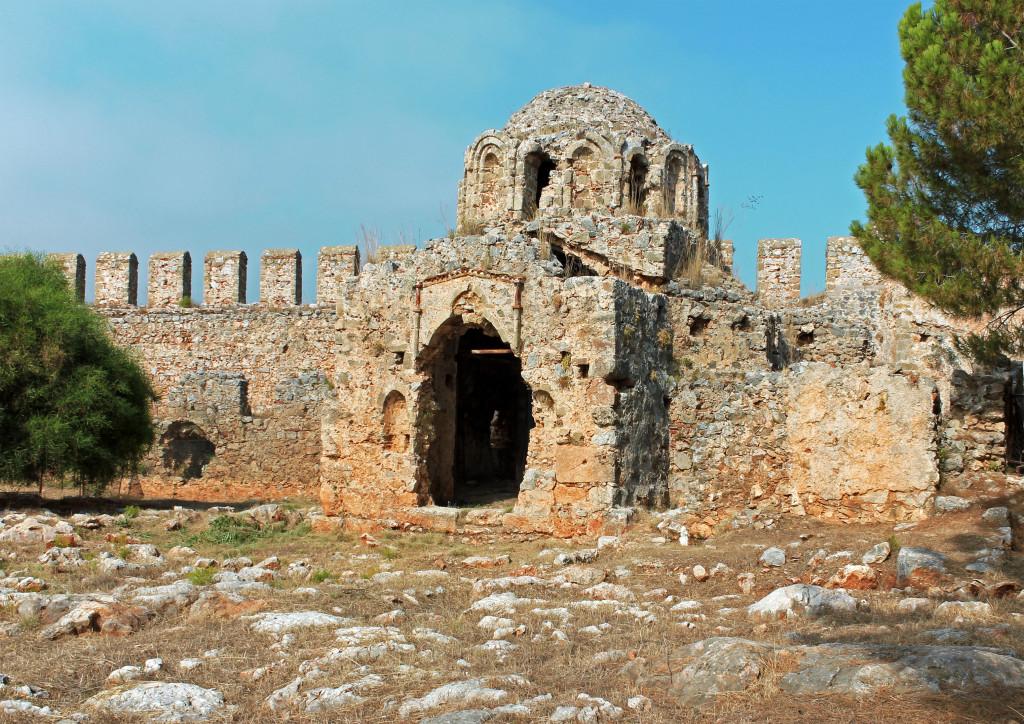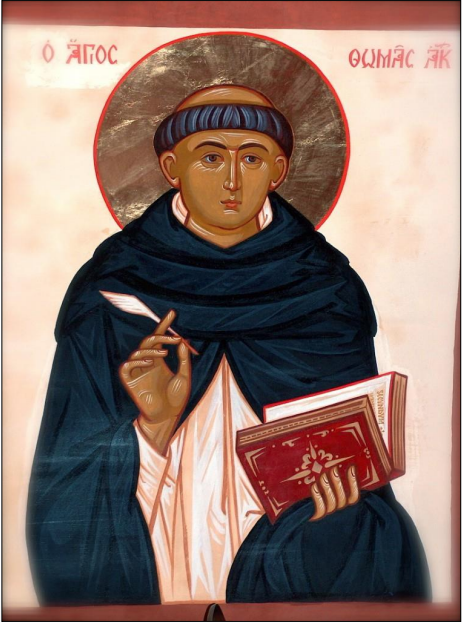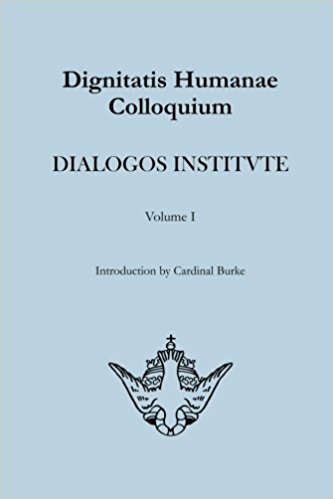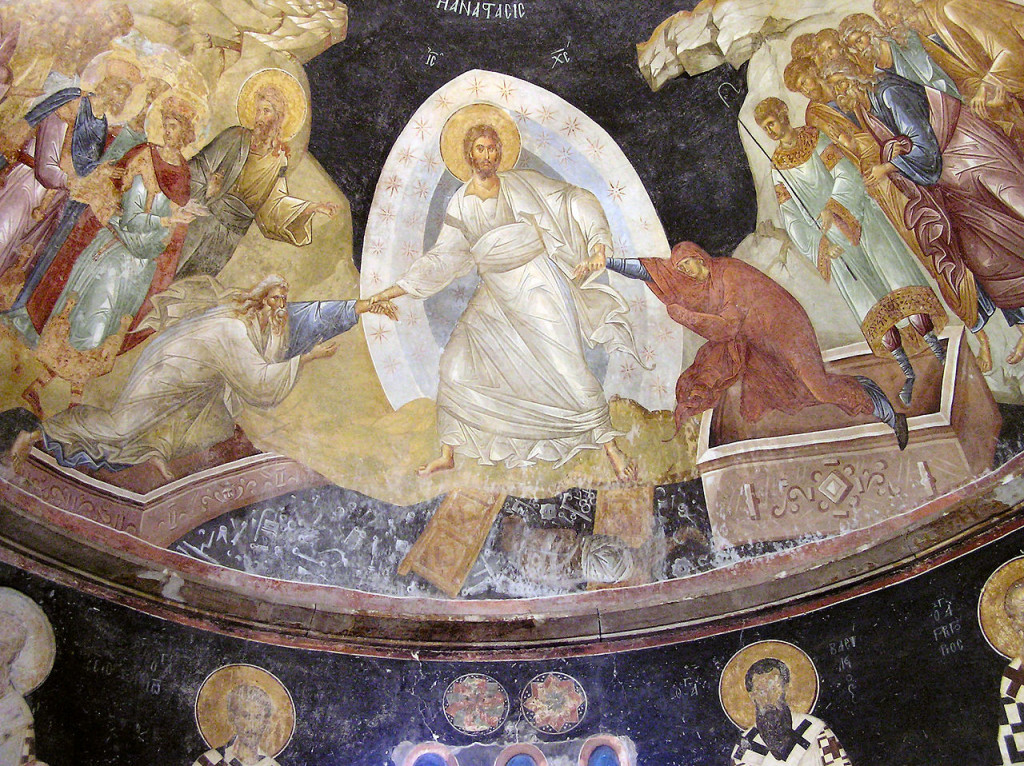The Teaching of Quanta cura is Definitive:
A Reply to Robert T. Miller
By Dr. John P. Joy
In his recent article on “Integralism and Catholic Doctrine” (here at Public Discourse), Robert T. Miller argues against the integralist ideal of a Catholic confessional state, understood as one in which the state would “officially endorse the Catholic faith and act as the secular arm of the Church by punishing heresy among the baptized and by restricting false religious practices if they threaten Catholicism.” More specifically, he takes issue with the thesis, advanced by Joseph G. Trabbic (here), that this integralist ideal is normative Catholic doctrine.
In the course of his attempt to prove the contrary, Miller raises the question of the doctrinal weight of Quanta cura, in which Pope Pius IX condemns the chief errors of the time. He admits that “many nineteenth-century theologians (including such greats as Louis Billot and John Henry Newman) thought at least some teachings in Pius IX’s 1864 encyclical Quanta cura were ex cathedra,” but argues that this is “untenable.”
On the contrary, Quanta cura is a clear and evident example of infallible teaching ex cathedra. Hence, Catholics are required to reject the propositions condemned by the encyclical. Anyone who does not “is opposed to the doctrine of the Catholic Church” (CIC 750, §2).
The Conditions for Infallible Papal Teaching
Miller gives two reasons in support of his conclusion against the infallibility of Quanta cura. The first is this: “Pius IX taught ex cathedra in his bull Ineffabilis Deus (1854) defining the dogma of the Immaculate Conception, and Quanta Cura is nothing like Ineffabilis Deus.” This is true, but irrelevant. It is rather like saying that a child is not a human being because it is nothing like an adult; or that Pius IX was not the pope because he was nothing like St. Peter. A thing can fail to measure up to the most pre-eminent example of its kind or class while still being a member of that kind or class. The question is not whether Quanta cura measures up to Ineffabilis Deus, but whether it fulfills the conditions for infallible papal teaching set forth by Vatican I in Pastor aeternus and reiterated by Vatican II in Lumen gentium.
What are these conditions? The First Vatican Council defined that the pope is infallible when: “in the exercise of his office as shepherd and teacher of all Christians, in virtue of his supreme apostolic authority, he defines a doctrine concerning faith or morals to be held by the whole Church” (PA 4).[1] According to the official relatio of Bishop Vincent Gasser on the intended sense of this definition, there are three essential conditions expressed therein: “The infallibility of the Roman Pontiff is restricted by reason of the subject, that is when the Pope, constituted in the chair of Peter, the center of the Church, speaks as universal teacher and supreme judge: it is restricted by reason of the object, i.e., when treating of matters of faith and morals; and by reason of the act itself, i.e., when the Pope defines what must be believed or rejected by all the faithful.”[2] These same three conditions are expressed even more succinctly in the Second Vatican Council’s reformulation of the doctrine: “The Roman pontiff, head of the college of bishops, by virtue of his office, enjoys this infallibility when, [subject] as supreme shepherd and teacher of all Christ’s faithful, who confirms his brethren in the faith (see Lk 22, 32), [act] he proclaims in a definitive act [object] a doctrine on faith or morals” (LG 25).[3]
Does Quanta cura fulfill these conditions? Let us look at the wording of the condemnation. Toward the end of the encyclical, Pius IX says this:
“In such great perversity of evil opinions, therefore, We, truly mindful of Our Apostolic duty, and especially solicitous about our most holy religion, about sound doctrine and the salvation of souls divinely entrusted to Us, and about the good of human society itself, have decided to lift Our Apostolic voice again. And so all and each evil opinion and doctrine individually mentioned in this letter, by Our Apostolic authority We reject, proscribe, and condemn; and We wish and command that they be considered as absolutely rejected, proscribed, and condemned by all the sons of the Catholic Church” (D 1699).[4]
Now the first condition, as we have seen, is that the pope must be “exercising his office as shepherd and teacher of all Christians, in virtue of his supreme apostolic authority” (PA 4). According to Bishop Gasser’s official relatio on papal infallibility, this means that the pope must be speaking qua pope, that is, “as a public person in relation to the universal Church.… not, first of all, when he decrees something as a private teacher, nor only as the bishop and ordinary of a particular See and province, but when he teaches as exercising his office as supreme pastor and teacher of all Christians.”[5] Now there can be no doubt that in Quanta cura Pope Pius IX is exercising his office as supreme head of the Church. In the first place, the letter is addressed to all the bishops of the universal Church. And secondly, the pope explicitly invokes his apostolic authority. Miller makes a great deal of the fact that the he invokes “merely” his “apostolic authority” whereas in Ineffabilis Deus, he had invoked “the authority of Jesus Christ our Lord, of the Blessed Apostles Peter and Paul, and his own authority.” Certainly the latter is a more solemn formulation of invocation; but it is not required for papal infallibility.
The second condition, which regards the object of infallibility, is that the pope must be speaking about a matter of faith or morals. As Bishop Gasser explains in the relatio on papal infallibility,[6] and as subsequent Church teaching has made even more abundantly clear, the infallibility of the Church, and hence of the pope, extends not only to truths directly contained in divine revelation, but also to “each and every thing which is required to safeguard reverently and to expound faithfully the same deposit of faith” (CIC 750, §2). Now according to Pius IX, the “false and perverted errors” condemned in Quanta cura are to be detested because they tend toward this end: “to impede and remove that salutary force which the Catholic Church, according to the institution and command of her divine founder, must exercise freely ‘unto the consummation of the world’ [Matt. 28:20], no less toward individual men, than toward nations, peoples, and their highest leaders…” (D 1688). But if infallibility extends as far as is necessary to safeguard the deposit of faith, then it must extend far enough to condemn false opinions which threaten to undermine the very institutions and commands of Christ.
The third condition, which pertains to the act of infallibility, is that the pope must be “defining doctrine to be held by the whole Church” (PA 4) or “proclaiming doctrine by a definitive act” (LG 25). According to Gasser’s official relatio, this means that “there is required the manifest intention of defining doctrine, either of putting an end to doubt about a certain doctrine or of defining a thing, giving a definitive judgment and proposing that doctrine as one which must be held by the universal Church.”[7] Or in other words, “as very many theologians say, when he definitively and conclusively proposes his judgment.”[8] The act of definition is the giving of a judgment or sentence that is ‘definitive’ in the sense of ‘final’ or ‘conclusive’. In Quanta cura, this note of definition is manifest in the whole formula of condemnation, and especially in this, that all the faithful are explicitly commanded to hold the false opinions condemned therein as “absolutely rejected, proscribed, and condemned” (D 1699). There is nothing in the least provisional or inconclusive in such a phrase. It could hardly be more definitive.
Not only is Miller’s comparison of Quanta cura to Ineffabilis Deus poor procedure, it entirely overlooks the distinction between the more solemn modus definitorius, which is traditionally used in dogmatic definitions of truths to be believed as divinely revealed, such as is found in the definitions of the Immaculate Conception and the Assumption of Mary, and the less solemn (but still infallible) modus definitivus, which is generally used in the definition of those truths not revealed in themselves but connected to divine revelation.
Heresy and the Lesser Theological Censures
Miller’s second argument has to do again with the object of infallibility. “Moreover,” he writes, “Pius never actually says that any of the condemned propositions is heretical (the opposite of de fide), leaving open the possibility that they are wrong in some lesser way (such as being ‘proximate to heresy,’ ‘erroneous,’ or ‘rash’—the so-called lesser theological censures).” It is unfortunately a common misconception that the pope is only infallible in defining divinely revealed dogmas or in condemning heresy, which is opposed to dogmas to be believed by divine and catholic faith. However, it is somewhat surprising that Miller falls into this error, since in the earlier part of his article he correctly distinguished between two levels of de fide teaching: “matters proposed ‘as divinely and formally revealed’ (propositions de fide divina et catholica)” and “matters ‘necessary for faithfully keeping and expounding the deposit of faith’ even if not themselves divinely revealed (propositions de fide ecclesiastica et catholica).” The doctrinal commentary of the CDF on the Profession of Faith uses a simpler terminology of de fide credenda (to be believed by faith) and de fide tenenda (to be held by faith).
As Miller himself correctly points out, the infallibility of the Church extends to both kinds of de fide teaching. And yet when it comes to the practical application of this principle with respect to Quanta cura, he restricts the scope of papal infallibility to the condemnation of heresy, which is opposed to dogmas of divine and catholic faith (de fide credenda), and excludes the condemnation of errors which are opposed to truths of Catholic doctrine (de fide tenenda). His mistake appears to lie in thinking that it is heresy to reject any de fide teaching, whereas in fact heresy is only opposed to teaching that is de fide in the strict sense, which is de fide credenda.
Gasser’s relatio makes it abundantly clear that papal infallibility is not to be restricted to the condemnation of heresy, but extends also to lesser theological censures such as ‘erroneous’ and ‘proximate to heresy’. In response to several fathers of the council who had raised this very question, Gasser explains:
“Indeed, the Deputation de fide is not of the mind that this word should be understood in a juridical sense (Lat. In sensu forensi) so that it only signifies putting an end to controversy which has arisen in respect to heresy and doctrine which is properly speaking de fide. Rather, the word ‘defines’ signifies that the pope directly and conclusively pronounces his sentence about a doctrine that concerns matters of faith or morals and does so in such a way that each one of the faithful can be certain of the mind of the Apostolic See, of the mind of the Roman pontiff; in such a way, indeed, that he or she knows for certain that such and such a doctrine is held to be heretical, proximate to heresy, certain or erroneous, et cetera, by the Roman pontiff. Such, therefore, is the meaning of the word ‘defines’.”[9]
Miller is right that according to canon law, “No doctrine is understood as defined infallibly unless this is manifestly evident” (CIC 749, §3). But it cannot reasonably count against the definitiveness of a teaching if its infallibility is not manifest to everyone, especially those with an incomplete grasp of what is required for infallibility. It is enough if it is manifestly evident in itself.
Contrary to Sacred Scripture, the Church, and the Most Holy Fathers
Having dispensed with the particular case of Quanta cura, Miller extends his argument to defend a more general claim that the integralist ideal of the Catholic confessional state cannot be taught infallibly, since it does not fall within the scope of “matters ‘divinely revealed’, things closely connected thereto, and the principles of natural law.” He proceeds to give his reasons for thinking that the doctrine in question is not part of the natural law, nor to be found in Scripture, nor in tradition, and then claims that this is why “none of the popes teaching this doctrine ever claimed it was divinely revealed (or closely connected to anything so revealed).” But this is simply false, as is especially clear with respect to the very condemnation cited by Miller as one of the strongest arguments for integralism, namely: “that the best condition of society is the one in which there is no acknowledgement by the government of the duty of restraining, by established penalties, offenders of the Catholic religion, except insofar as the public peace demands” (D 1689). And this false doctrine is to be condemned, according to Pius IX, as being “contrary to the doctrine of Sacred Scripture, of the Church, and of the most holy Fathers” (D 1689).
The Infallible Condemnations of Quanta cura
If the condemnations contained in Quanta cura are indeed infallible, Catholics ought to know what they are in order to avoid them. In the course of his argument, Miller twice implies that it is difficult to know which propositions are condemned in Quanta cura, but this is not true. They are easy to identify if one takes the trouble to read the whole letter. The errors infallibly condemned in Quanta cura are these:
- “That the best plan for public society, and civil progress absolutely requires that human society be established and governed with no regard to religion, as if it did not exist, or at least, without making distinction between the true and the false religions” (D 1689).
- “That the best condition of society is the one in which there is no acknowledgment by the government of the duty of restraining, by established penalties, offenders of the Catholic religion, except insofar as the public peace demands” (D 1689).
- “That liberty of conscience and of worship is the proper right of every man, and should be proclaimed and asserted by law in every correctly established society; that the right to all manner of liberty rests in the citizens, not to be restrained by either ecclesiastical or civil authority; and that by this right they can manifest openly and publicly and declare their own concepts, whatever they be, by voice, by print, or in any other way” (D 1690).
- “That the will of the people, manifested as they say by public opinion, or in some other way, constitutes the supreme law, freed from all divine and human right; and, that deeds consummated in the political order, by the very fact that they have been consummated, have the force of right” (D 1691).
- “That [religious] orders have no legitimate reason for existing” (D 1692).
- “That from the citizens and the Church must be taken away the power by which they can ask for alms openly in the cause of Christian charity, and also that the law should be repealed by which on some fixed days, because of the worship of God, servile works are prohibited” (D 1693).
- “That domestic society or the family borrows the whole reason for its existence from the civil law alone; and, hence, all rights of parents over their children, especially the right of caring for their instruction and education, emanate from and depend wholly on the civil law” (D 1694).
- “That the clergy as an enemy to the true and useful progress of science and government, must be removed from all responsibility and duty of instructing and training youth” (D 1695).
- “That the laws of the Church do not bind in conscience, except when promulgated by the civil power” (D 1697).
- “That the acts and decrees of the Roman Pontiffs relating to religion and the Church, need the sanction and approval, or at least the assent, of the civil power” (D 1697).
- “That the Apostolic Constitutions, in which secret societies are condemned, whether an oath of secrecy is demanded in them or not, and their followers and sympathizers are punished with anathema, have no force in those regions of the world where societies of this sort are allowed by the civil government” (D 1697).
- “That the excommunication uttered by the Council of Trent and the Roman Pontiffs against those who invade and usurp the rights and possessions of the Church rests upon a confusion between the spiritual order and the civil and political order for the attaining of a mundane good only” (D 1697).
- “That the Church should decree nothing which could bind the consciences of the faithful in relation to the use of temporal goods” (D 1697).
- “That to the Church does not belong the right to coerce by temporal punishments violators of its laws” (D 1697).
- “That it is conformable to the principles of sacred theology, and to the principles of public law for the civil government to claim and defend the ownership of the goods which are possessed by churches, by religious orders, and by other pious places” (D 1697).
- “That the ecclesiastical power is not by divine right distinct from and independent of the civil power, and that the distinction and independence of the same could not be preserved without the essential rights of the civil power being invaded and usurped by the Church” (D 1698).
- “That without sin and with no loss of Catholic profession, one can withhold assent and obedience to those judgments and decrees of the Apostolic See, whose object is declared to relate to the general good of the Church and its rights and discipline, provided it does not touch dogmas of faith or morals” (D 1698).
Today no less than in 1864 all Catholics are obliged to reject and condemn each and every one of these false ideas and opinions.
__________________________________________________________________________________________
[1] Vatican I, Pastor aeternus, cap. 4; Decrees of the Ecumenical Councils (DEC), ed. Norman P. Tanner, S.J. (Sheed & Ward; Georgetown University Press, 1990), 816.
[2] The Gift of Infallibility: The Official Relatio on Infallibility of Bishop Vincent Ferrer Gasser at Vatican I, trans. James T. O’Connor (Ignatius Press, 2008), 49; Mansi 52:1214C.
[3] Vatican II, Lumen gentium, 25; DEC 869.
[4] Denzinger: The Sources of Catholic Dogma, 30th ed., trans. Roy J. Deferrari (Loreto Publications, 2007).
[5] The Gift of Infallibility, 77; Mansi 52:1225B.
[6] See The Gift of Infallibility, 78-81; Mansi 52:1225-27.
[7] The Gift of Infallibility, 77; Mansi 52:1225C.
[8] The Gift of Infallibility, 81; Mansi 52:1227B.
[9] The Gift of Infallibility, 92; Mansi 52:1316A-B.
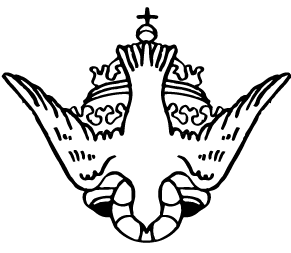 INSTITVTE
INSTITVTE
